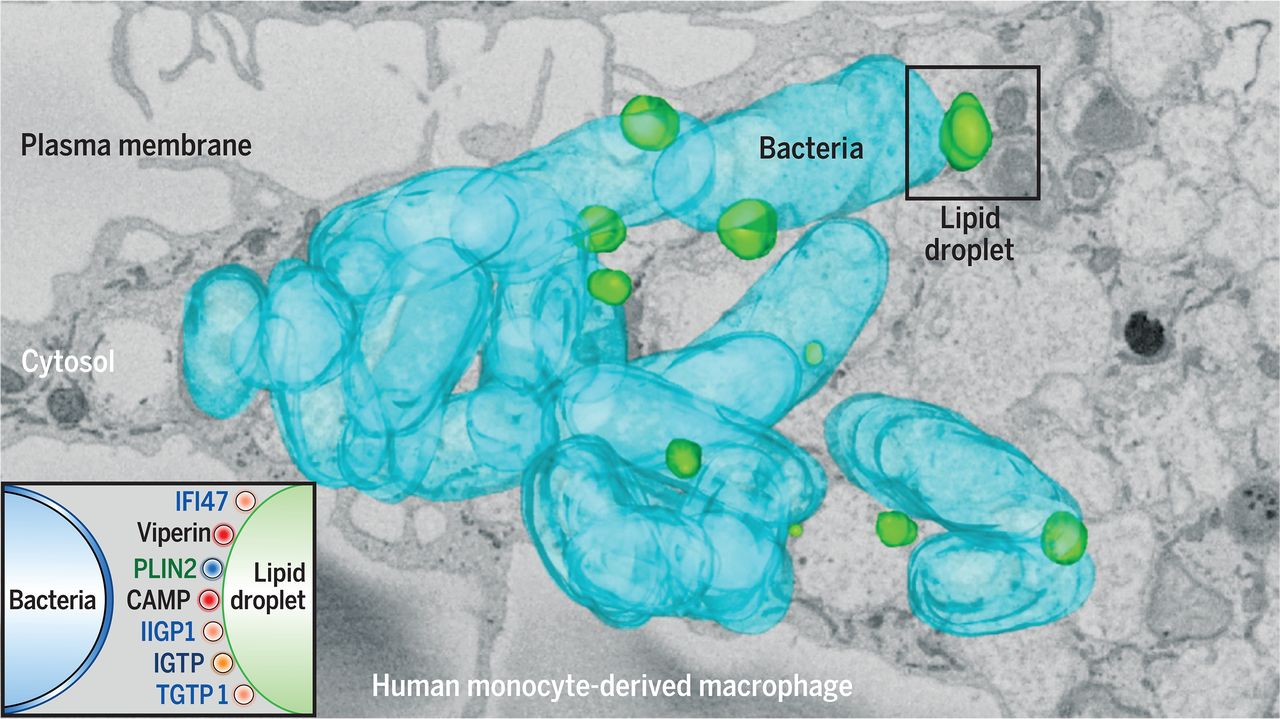Science: Scientists discover a new mechanism for cellular defence against viral and bacterial infections
Researchers of IDIBAPS, the University of Barcelona and CNIC describes a new mechanism of innate immunity by which cells fight viruses and bacteria.
A study published in the journal Science and coordinated by researchers of IDIBAPS and the UB describes a new immune defence mechanism unknown until now. It is a mechanism orchestrated by lipid droplets (LDs), the cellular organelles capable of attracting and eliminating invading pathogens.
Researchers from Spain, the United States, Australia and Brazil have participated in the international project, financed by the Human Frontier Science Program, with the collaboration of scientists from the CNIC and IIBB-CSIC. Albert Pol, ICREA professor at IDIBAPS, where he leads the Lipid Trafficking and Diseases team and associate professor at the UB School of Medicine and Health Sciences, and Robert G. Parton, from the Institute of Molecular Biosciences at the University of Queensland, are the study coordinators. The first authors of the work are Marta Bosch, a researcher from the IDIBAPS group, and Miguel Sánchez-Álvarez, from the CNIC Mechanoadaptation and Caveolas Biology group.
CNIC researchers Miguel Ángel del Pozo (Group of Mechanoadaptation and Biology of Caveolas) and Juan Antonio López, Rocío Campo and Jesús Vázquez (Group of Cardiovascular Proteomics), have participated in this research
LDs are the organelles where our cells accumulate nutrients that, in the form of fat, provide the necessary energy for them to develop their function. For example, LDs provide the energy for the heart to beat, the liver to do its metabolic function, or the muscle to move. “The lipid droplet is like the pantry of our cells, where we accumulate the food that we will use later. This happens in all eukaryotic cells, from yeasts or insects to plants or mammals,” says Albert Pol.
When viruses or bacteria infect the host cell, they need great amounts of nutrients to multiply and to get them to reach the LD. In the study published in Science the researchers have shown that, in response to infection, DLs organize complexes of antibiotic and antiviral proteins that act cooperatively to fight the pathogen and eliminate it. It is a mechanism that would work in all cells of the body, not just professional cells of the immune system such as macrophages. This defence strategy has also been observed in insects, suggesting its importance during the evolution of our innate immunity.
The lipid droplet is like the pantry of our cells, where we accumulate the food that we will use later. This happens in all eukaryotic cells, from yeasts or insects to plants or mammals
Researchers have shown that to protect themselves from infection, cells place large amounts of antibiotics and antiviral proteins on LDs. In total, comparing the surface area of DL in normal cells and infected cells, the study has identified 400 candidates that would perform the protective function of LDs when they are in contact with the pathogen. "In this study, we have focused on six of these proteins and we have shown that they protect the cell during the infection of different types of bacteria" explains Marta Bosch.
"The concentration of these antibiotic and antiviral proteins in a single compartment inside the cell allows creating synergies while reducing their toxicity and allowing the rest of the cellular machinery to function normally," says Miguel Sánchez-Álvarez.
Furthermore, the study shows that this strategy allows a broad-spectrum response, that is, there are many antibiotics and antivirals with different mechanisms of action. It also allows the generation of cooperative mechanisms to attack the infection. "There are synergies between proteins, and, for example, one breaks the membrane of the pathogen and the other destroys its genomic material," authors explain.
"This study represents a paradigm shift since until now it was thought that LDs were at the service of viruses or bacteria during infection," says Albert Pol. "Given the widespread resistance to current antibiotics, this study has deciphered an important defence mechanism that could be used for the development of new therapeutic strategies to stop infections,” he concludes.
The concentration of these antibiotic and antiviral proteins in a single compartment inside the cell allows creating synergies while reducing their toxicity and allowing the rest of the cellular machinery to function normally











